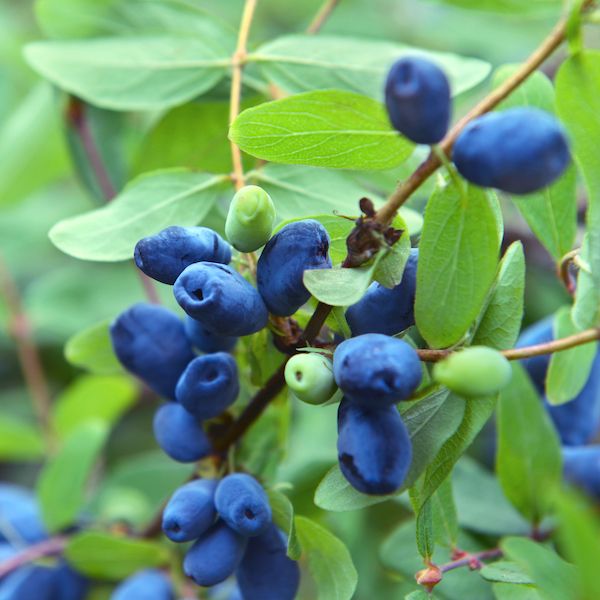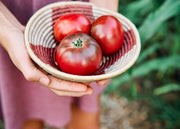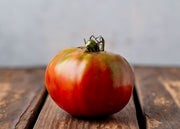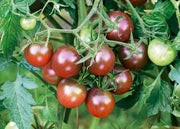Grow a unique and nutritious fruit – Honeyberries! The Honeybee Honeyberry is a favorite among enthusiasts, as it fruits at an early age and holds onto its fruit better than most other varieties. These elongated berries are sweet and tart, similar in flavor to blueberries. Its fruits are cylindrical and look more like their Russian parent perhaps like the shape of a bee’s body. These fruits are high in antioxidants, as high or higher than blueberries! Honeyberries can be used for jams, juice, syrups, and wine. They also make great ice cream and smoothies. Honeyberry plants are very vigorous and early producing, often setting fruit in their second year after planting. These upright growing plants bloom in April and set fruit that ripens mid-June to mid-July. Also referred to as Haskaps, this cold-hardy plant is a great choice for gardeners up north! It requires about 1,000-1,200 chill hours. Plant honeyberries in rich soil, with a pH between 5-7. For this specimen to produce, it’ll need a different honeyberry plant that blooms around the same time to pollinate it. Honeybee was selected to be pollinator for Borealis, Tundra and Indigo series. Survival Guaranteed! Since 1816, Stark Bro’s has promised to provide customers with the very best fruit trees and plants. It’s just that simple. If your trees or plants do not survive, please let us know within one year of delivery. We will send you a free one-time replacement. If the item in question is not available, we can issue a one-time credit to your account equaling the original product purchase price or issue you a refund. Read more about our warranty policy. Characteristics Bloom Color Cream, Yellow Fruit Color Blue Fruit Size Large Ripens/Harvest June Shade/Sun Partial Shade – Full Sun Soil Composition Loamy Soil Moisture Well Drained Soil pH Level 5.0 – 7.0 Taste Sweet, Tart Years to Bear 2 – 3 Zone Range 2 – 8 Size & Spacing Mature Size When your plant matures, it will be approximately 5′ tall x 5′ wide. Recommended Spacing We recommend spacing these plants 4 – 5′ apart to ensure room for growth. Zone Compatibility This Variety’s Zone Range 2 – 8 My Hardiness Zone ? Zip Code The USDA hardiness zones offer a guide to varieties that will grow well in certain climates. Each zone corresponds to the minimum winter temperatures experienced in a given area. Make sure that your hardiness zone lies within the zone compatibility range of this variety before ordering.
Edible Gardening, Fruit Trees & Nuts, Fruit Trees & Nuts, Nursery




Reviews
There are no reviews yet.